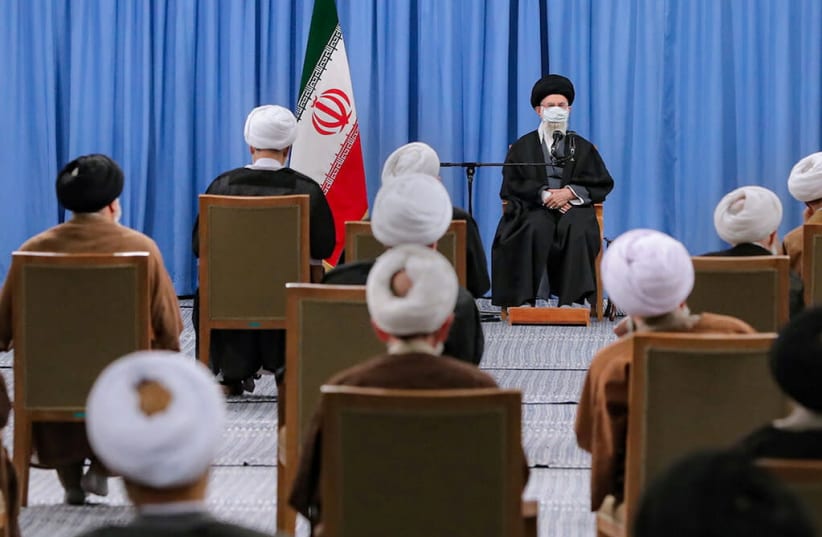The founding statement called for the overthrow of the Iranian regime, describing it as “the biggest obstacle in the way of freedom, prosperity, democracy, progress, and human rights.” The signatories urged Iranian activists to unite, to make #No2IslamicRepublic their national solidarity objective, and “to create a massive movement that can purge Iran from this dark and corrupt regime.” Many ordinary Iranians posted images on social media of murdered and executed dissidents and political prisoners, along with other examples of social and cultural oppression by the Islamic Republic since its establishment in 1979.
Since the launch, the number of adherents has mushroomed into the tens of thousands, and the campaign has succeeded in uniting opposition elements outside the country that have previously failed to coalesce. As the number of signatories rapidly rose, it became clear that they were drawn from many sectors of Iranian society: political and civil rights activists, artists, athletes, authors and university professors, among others.One of the best-known is filmmaker Mohammad Nourizad, who has spent years in and out of prison for his outspoken criticisms of Supreme Leader Ayatollah Ali Khamenei. He was joined by five female advocates for democracy and women’s rights who were arrested and jailed in 2019 after signing an open letter calling for Khamenei’s resignation.
The #No2IslamicRepublic campaign is supported by many Iranians abroad who are household names in Iran – singers, a composer, an award-winning filmmaker, a historian, a feminist sociologist, women’s rights activists and even former Ontario cabinet minister Reza Moridi.
The most public face of the campaign is Reza Pahlavi, the deposed Shah’s son and Iran’s last heir to the throne before the overthrow of the monarchy in 1979. The 60-year-old Pahlavi heads the National Council of Iran for Free Elections, which has been acting as a government-in-exile. Just recently he announced a major change in the objective of his organization.
Setting aside his previous intention to reestablish a constitutional monarchy, Pahlavi now supports the establishment of a democratic republic to replace the revolutionary regime. This has meant that a rival body operating its own government-in-exile, an organization calling itself The National Council of Resistance of Iran (NCRI), has been able to come together with Pahlavi under the umbrella of the #No2IslamicRepublic campaign.
From the regime’s point of view, the campaign could not have surfaced at a more inconvenient time. Iran is in the midst of a delicate diplomatic game of poker with the US over reopening the nuclear deal. Is Iran going to agree to observe the terms of the original deal, which the US demands as the price of returning to the table, or is Washington going to lift all the sanctions imposed during the Trump era, which is Iran’s precondition? A full-scale public rebellion inside Iran, not only against the government but against the republic itself, would severely weaken the regime’s bargaining position.
THE SITUATION is made even more unstable because new Iranian presidential elections are scheduled for June 18, and activists are seizing the opportunity to condemn the faux democracy that has been imposed on the country. Iranians know that nothing happens in the state without the approval of the supreme leader, and that Hassan Rouhani is president only because it suited Ayatollah Khamenei in 2013 and again in 2017 to have him as a “moderate” figurehead.
Moderation may be far from how the regime intends to deal with the current insurrection. Present indications are that a military hard-liner is likely to succeed Rouhani, who is serving his final term. As with all elections in Iran, potential candidates must be vetted by the Guardians Council, whose members are directly and indirectly appointed by Khamenei, and the supreme leader is reported to have said publicly that the country should be led by a relatively young and ideologically hard-line president.
The Islamic Republic is currently weaker than it has been for decades. Ex-president Donald Trump’s “maximum pressure” policy, applied for years, succeeded in reducing the regime’s power, both economically and politically. Yet President Joe Biden, determined as he is to resurrect ex-president Barack Obama’s failed policy of seeking engagement with Iran, is unlikely to offer any support, overt or covert, to this latest effort to substitute a genuine democracy for the rigid, unpopular and failing theocracy currently imposed on the Iranian people.
If Biden does turn his back on Iran’s popular uprising, it would be a case of history repeating itself.
The patently manipulated 2009 reelection of Mahmoud Ahmadinejad as Iranian president gave rise to an upsurge of popular anger. The public believed that the poll had been subject to vote rigging and election fraud. Ordinary Iranians took to the streets in their millions in what came to be known the “Green Movement.”
The Obama administration – eager, perhaps determined, to engage with Iran regardless of the cost – did precisely nothing to support the protest. The message the ayatollahs took was that the US would look away no matter what they did to stamp out their domestic opposition. As a result, the Green Movement was ruthlessly suppressed, and its leaders were either imprisoned or eliminated.
Widespread popular discontent with Iran’s revolutionary regime rumbles away below the surface, and there have been other opportunities – such as in the popular uprisings in 2019 and 2020 – to endorse it, but neither the US nor any Western nation has ever offered overt support. The reluctance is perhaps understandable. Past efforts at encouraging or supporting regime change, even in flagrantly anti-democratic countries, does not have a notably successful track record.
To attempt the overthrow of an established regime that has all the engines of the state and the military under its control is a formidable, perhaps foolhardy, enterprise. Yet this #No2IslamicRepublic campaign has just that objective.
Unless, or until, it seems to be succeeding, experience tells us that it can expect little by way of outside support.
The writer is Middle East correspondent for Eurasia Review. His latest book is Trump and the Holy Land: 2016-2020. He blogs at a-mid-east-journal.blogspot.com
